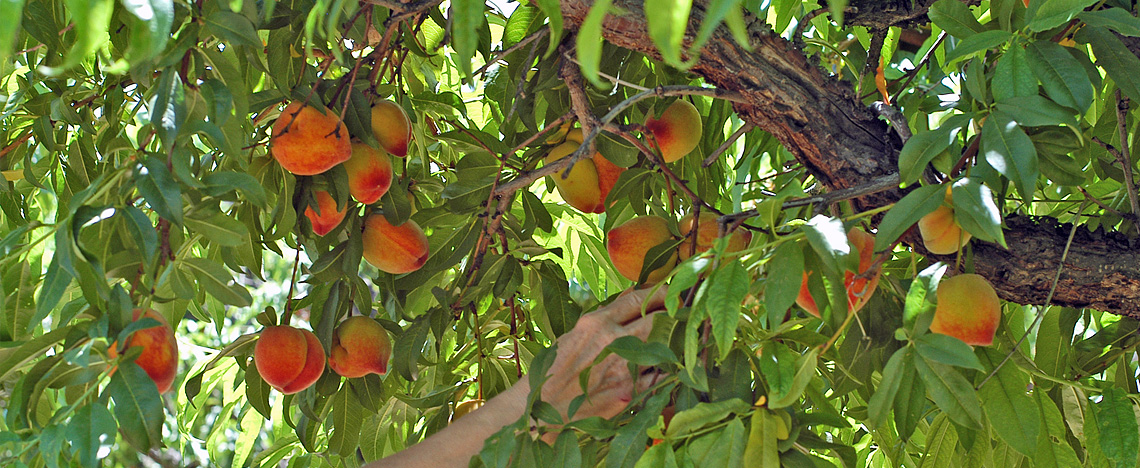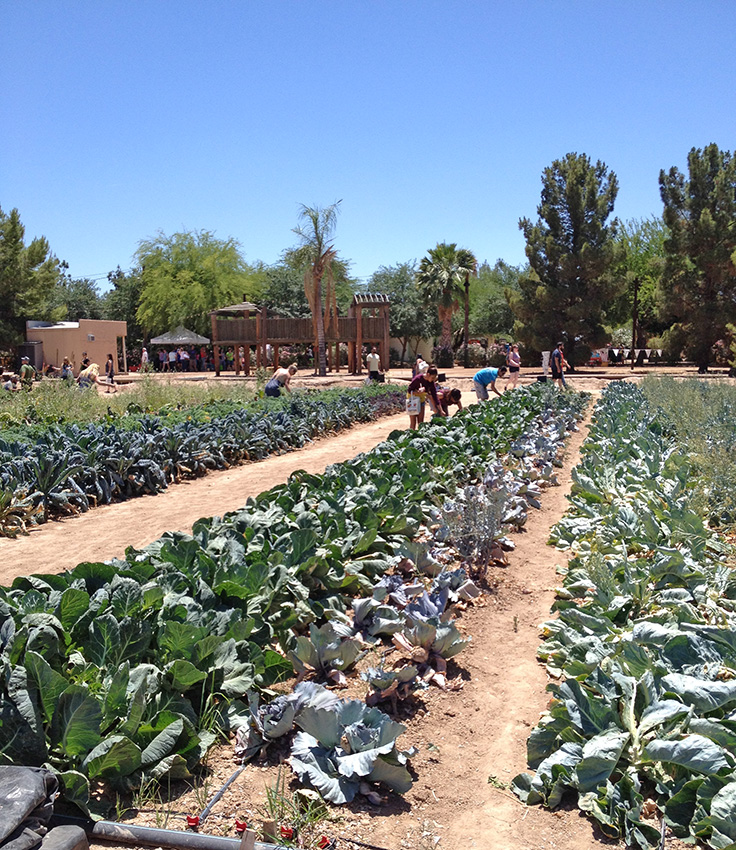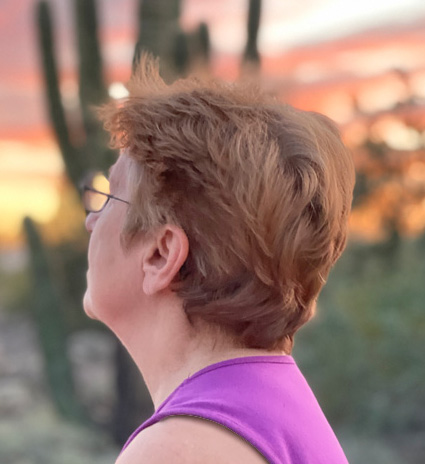
Peaches farm
Last week, friends suggested that on Saturday, May 13, we join them for a trip to a private farm to pick peaches. The farm was not too far away, just about an hour’s drive. We gladly agreed. I imagined us being given a plot of land (like in the Soviet times at a collective farm), where we would all work together to meet the quota, then pick full bags for ourselves, and I would make jam. But I was a “naïve Chukchi grandmother”. I was told it was more of a recreational event. The farm would be hosting a peach-picking festival, and we would need to pay for the peaches we picked.
The private Schnepf Farms is located in the south, not far from the small town of Queen Creek. Fifty years ago, the Schnepf family planted the first peach trees in the desert; initially, they sold the produce at a roadside stand, and after five years, people started coming to pick peaches themselves. Now it is a very popular place, offering peach-picking throughout May, with a week-long peach festival in the middle of the month. In addition to growing peaches and vegetables, the farm engages in agrotourism. They host weddings and organize various events throughout the year, including pumpkin picking for Halloween, farmers’ markets, and Easter activities.
We realized the farm’s popularity as soon as we approached it. We drove on the highway at 70 miles per hour for about 40 minutes. As we neared the farm, we hit a massive traffic jam. Cars from two roads merged into one lane at the farm entrance, and then this stream of traffic moved slowly to the parking area. We spent another forty minutes moving in a line. The parking area was a whole field already filled with a sea of cars.
Finally, we parked and headed to the farm. The entrance ticket cost five dollars per person, children under 12 were free. Besides parents with children, there were also a lot of elderly American grandmothers. Many grandmothers were in shorts, with walking sticks, barely moving, but they all came to enjoy (as they say here, “for the fun”).
There were cafes on the farm selling ice cream, peach pancakes, pies, and buns also with peaches. They also sold antique items: bicycles, chairs, benches, lockers, frames, etc. This was for collectors of vintage junk. A rural attraction featured an old carousel with iron horses running in a circle and an ancient children’s train. It all reminded me of a distant childhood.
There were stands where you could buy vegetables grown in nearby beds and already picked peaches at $3.60 per pound. But we came to pick peaches ourselves, so we joined the line where a wheeled tractor with a trailer was approaching. The trailer had bales of straw along the walls instead of benches. After three minutes, we arrived at the place where peach-picking was open. There were cardboard boxes and small paper bags with handles. People took containers, went around the orchard, and picked their desired peaches.
The farm prides itself on growing organic peaches without pesticides, and it is believed that they are the best in the country. The peaches were indeed tasty, fragrant, and very tender. We ate them straight from the tree. Peaches sold in stores are not the same; they often seem to be processed and sometimes look like plastic. After filling a box, we went to weigh and pay. The peaches we picked ourselves cost $2.20 per pound. We paid 44 dollars for 20 pounds (about 10 kg).
Then, we sent Dad with the harvest to the car and our companions headed back home, while Vala, Marik, and I went back to the farm to walk around the beds and show the child how things grow. They recently had a “radish seed germination project”. When the seeds sprouted, they were told to plant them in soil at home. We planted them in a pot, and he asked, “Will it be a bush?”. The child only sees vegetables in the store.
So we wandered around the beds, looked at how zucchinis, cabbage, and lettuce grow. We hand-dug a couple of carrots, four beets, gathered some lavender, and went to weigh and pay. My daughter also bought some potatoes. We didn’t take much because everything was still small, and it’s much cheaper in stores.
When we were ready to leave, many people were also trying to leave, and we once again moved in a slow traffic jam. We managed to see the surrounding fields; on one of them, we saw remnants of cotton bushes. It turns out that cotton is grown in Arizona. We passed by a private olive farm where they grow olives, press and sell local olive oil, and also engage in agrotourism.
We drove through the small town of Queen Creek again. The town has a population of about 33,000, but while we were driving through, I didn’t see a single person walking (they say you only see pedestrians in big cities). Only cars were zipping around. We also passed by a huge school. Near the school was a parking lot for school buses. There were as many school buses as in our city’s bus depots.



















